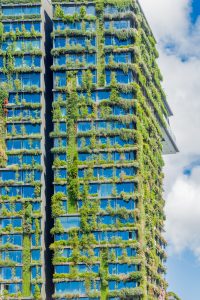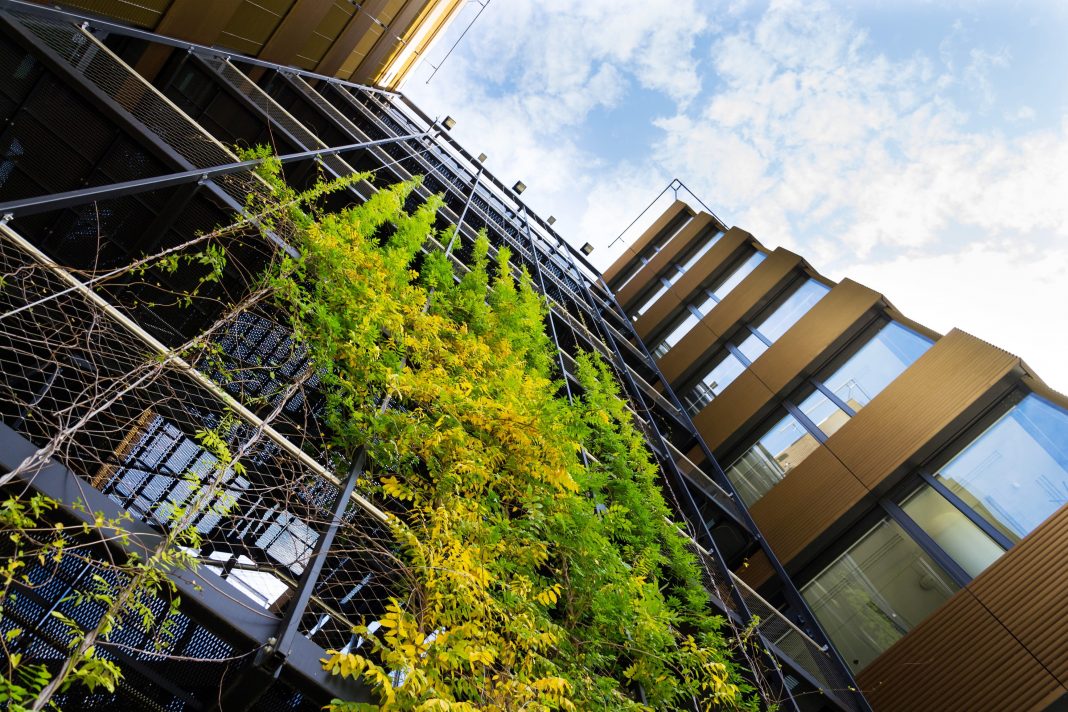According to a growing body of research, ‘green construction’ can transform the way we live, work, play and learn. But what does it mean?
The World Green Building Council says a green building is one that, in its design, construction or operation, reduces or eliminates negative impacts, and can create positive impacts, on our climate and natural environment.
In simple terms, green buildings preserve precious natural resources and improve our quality of life.
The concept of eco-friendly building materials and developments was initially about reducing the environmental impact of construction by improving factors such as energy efficiency and waste management.
However, the role that buildings can also play in improving health outcomes, providing a positive impact on the quality of life of people around the world, has led to a major shift in focus.
As well-being moves up the list of priorities for employees around the world, building developers are moving beyond environmental goals to provide amenities that promote health and foster productivity.
The vision is to not only create built environments that are cleaner, more efficient and more sustainable but that also better equip the industry and future generations for the global challenges of tomorrow.
Green building – also referred to as eco-friendly construction – refers to both a structure and the application of processes that are environmentally responsible and resource-efficient throughout a building’s life-cycle.
This begins in the planning and design phase and is followed through in construction, operation, maintenance, renovation, and even demolition, requiring the contractor, the architects, the engineers, and the client to work together at every stage throughout the process.

There are several features which can make a building ‘green’. These include:
- Efficient use of energy, water and other resources
- Use of renewable energy, such as solar energy
- Pollution and waste reduction measures, and the enabling of re-use and recycling
- Good indoor environmental air quality
- Use of materials that are non-toxic, ethical and sustainable
- Consideration of the environment in design, construction and operation
- Consideration of the quality of life of occupants
- A design that enables adaptation to a changing environment.
Any building can be a green building, whether it’s a home, an office, a school, a hospital, a community centre, or any other type of structure, but not all green buildings are the same. Different countries and regions have a variety of characteristics such as distinctive climatic conditions, unique cultures and traditions, diverse building types and ages, or wide-ranging environmental, economic and social priorities – all of which shape their approach to green building.
The World Green Building Trend 2018 Report, involving 2,000 industry professionals across 86 countries, revealed that half of the sector expects most projects to be ‘green’ in three years.
Top reasons given were client demand, environmental regulations and social reasons, such as the drive to ‘do what’s right’.
Of all the social factors presented in the report, improved occupant health and wellbeing were considered the most important. Other social impacts gaining momentum include creating a sense of community and supporting the domestic economy.
The fact is green buildings provide a triple win — delivering measurable benefits for building owners, occupants and the public from reduced operating costs, improved indoor air quality and reduced energy consumption.
Despite the many benefits, there are obstacles to green building. The top barriers reported include:
- Actual and perceived first costs
- Lack of political support or incentives
- Affordability
- Lack of public awareness
- Lack of market demand.
The good news is that these are not acting as a deterrent to buck the trend. The international market for green buildings has grown significantly in the last 10 years and demand is poised to grow, with eco-friendly house design now the preferred approach.
Premier Guarantee
Tel: 0800 107 8446
Twitter: @PG_Live

















